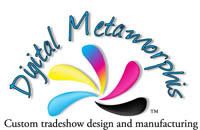1. Establish your reason for exhibiting at a show.
Your company must ask itself why is it exhibiting at a specific trade show. Write out your trade show objective. Once you have determined the objective, concentrate your booth messages to complement that one show objective. Work hard to create a singular objective. A business that has multiple strategies cannot successfully focus its efforts. Select a single show objective and concentrate your energies to meet that objective. Donƒt dilute your energies.
2. Pick the right show.
Do your homework in advance. Does the show selected attract the correct audience for your products or services? Does it have the proper attendance to justify your anticipated expenditures? Call the trade show sponsor to obtain a list of previous show attendees. Call a small sample (5-10) of your target accounts to see if they will be attending the show. If all the answers are positive, it is probably a good show at which to exhibit.
3. Set your trade show budget and how you will spend it.
Determine how much the company is willing to spend, prepare a written budget, apportion the money properly, and record your expenses for future review. Determine why the budget amount was exceeded for any reason after the show or if you held to the pre-determined budget.
4. Market your trade show exhibition.
Depending on your budget allocations, market to target customers before the trade show. Use a short clear direct mail piece letting target companies know your company will be exhibiting, what the booth number is, where your booth is physically located at the show, at what their benefits will be if they stop by your booth.
5. Create a clean, clear, simple booth.
You don't get much time to make sure a show attendee understands your booth's message. Don't confuse them. Flashy booths with many areas that attract a visitor's visual attention will overpower and confuse. Keeping a booth simple is the key. Ensure your booth visitor receives the information they need to make a decision favorable to your company. That's all they need and that's all you want.
6. Grab the trade show visitors' attention.
Attendees at any trade show pass by hundreds of booths, sometimes thousands depending on the show. Your company will have only a few seconds, sometimes as little as 5 seconds, to catch the attention of a show attendee. Make sure your booth is designed to create a single focal point using easy to read text with clean simple graphics so trade show visitors will understand your message quickly and correctly.
7. Create a booth that makes visitors feel comfortable.
Remove physical barriers to visitor exchange. Too often booth designers create a boot that they believe "looks cool." While it may, it doesn't encourage visitors to your booth stop and want to talk to you because they don't feel comfortable. Make it easy for booth visitors to enter your space and obtain the information they desire. Many booths are designed as barriers with tables between you and your potential customers. A U-shaped trade show space removes the barriers between booth operator and visitor and encourages exchange. If visitors are comfortable and want to enter your booth, it is more likely they'll listen to your sales pitch and your show will generate better success.
8. Visit your booth before the show.
Put your creative ego in check and "visit" your booth just like the trade show attendee will do. Take an objective look at your booth and ask yourself if you would be attracted to the display and would you actually remember your booth. If you have selected the correct trade show and know the audience for that show, you should be able to create a display that will motivate visitors to stop at your booth. Understand the reasons they are attending this show. Give them a reason, a real benefit to them, to stop at your booth. Do a little pre-show research on your target audiences' show motivations.
9. Record visitor interest and key contact data.
If you have successfully attracted visitors to your booth, you need to record their key contact information and what they were individually interested in — whether it is one of your products or services your company offers. Most large shows offer easy ways to scan in key contact data, but they don't provide a means to record individual interest. Use a dictating machine, a prepared spreadsheet, or simple lined paper to record what the visitor was interested in so you can properly follow up with those that are real targets.
10. Don't forget proper show follow-up.
Just because you created a great booth doesn't mean you'll attract good traffic at your booth. Our fourth tip discussed limited pre-show marketing. Not only do you need to market your attendance before the show, but you must follow up after the show on all the leads generated during the show to effectively ensure your trade show investment will be optimized. Those show leads cost you a lot of money. Make sure you translate some into sales for your company.
Saturday, June 2, 2007
More tips for a succsessful trade show!
Subscribe to:
Post Comments (Atom)




No comments:
Post a Comment